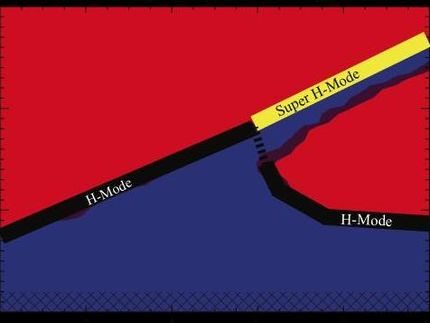Made to order: Researchers discover a new form of crystalline matter
Advertisement
Dust is everywhere: under the bed, on the stairs and even inside of plasmas. A team of researchers from Auburn University, the University of Iowa and the University of California, San Diego, using the new Magnetized Dusty Plasma Experiment (MDPX), the first U.S. experiment of its kind, recently discovered a new form of crystalline-like matter in strongly magnetized dusty plasma.

[Left] Typical plasma crystal with a self-ordered, hexagonal arrangement of dust particles indicated by the bright white spots. [Middle] Made to order square pattern formed in an imposed dust crystalline-like structure. [Right] A typical dusty plasma illuminated by a green laser in the MDPX experiment at Auburn University.
Max Planck Institute
A feature of dusty plasmas is that under the proper conditions, usually at higher gas pressures, the dust particles can form self-organized, hexagonal structures - a configuration known as a "plasma crystal."
The striking aspect of the newly discovered crystal structures is that the lattice (spacing between crystal particles) properties can be imposed arbitrarily by an external grid/mesh structure. These new made-to-order crystals can have any geometric pattern, making them distinct from the crystal lattices of ordinary solids and traditional plasma crystals, which are self-organized structures not imposed by external boundary conditions.
In space, scientists observe large dust structures in star-forming regions such as planetary nebula. Small dust grains--the thickness of human hair or smaller--form amazing structures such as Saturn's rings and the long tails of comets. Most of these naturally-occurring dusty plasma systems have a very complex interaction between plasma, magnetic fields and these tiny, charged grains of dust.
On the Earth, this same mixture of plasma, magnetic fields and charged dust grains, is often present in many industrial and research plasmas from semiconductor manufacturing to fusion experiments. In some cases, the dust is considered to be a source of contamination that needs to be controlled and safely removed from the plasma. But, if the properties of smaller (nanometer-scale) particles can be controlled and manipulated, they could prove to be an important tool in the future of plasma manufacturing.
Ongoing studies on the MDPX show the ability to control the shape of these ordered structures and where they are suspended in the plasma. In the future, this discovery could lead to new approaches to trapping and controlling micro-particles in plasma and further efforts in designing their properties for both fundamental physics investigations and possible processing and industrial applications.






























































